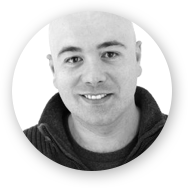interview
Optimising production, transport and processing of poultry meat by automated ambient monitoring and control, and data analyses.
The use-case Poultry chain management focuses on increased comfort during transport, optimized slaughtering conditions and greater production efficiency throughout the production chain. How can Internet of Things technology help? Can you give examples?
The value of IoT lies in the combination of data collection and data analysis, which leads to better insights in the whole process of poultry production. We will be able to determine optimum temperatures and humidity, for example, and then make real time predictions. If the temperature is predicted to exceed the target value, the farmer gets a warning and can act upon it. If needed, we could even include automated actuation. In that case, the temperature of the barn is regulated automatically based on sensor input, analysis and comparison to the optimum situation. For now, we are concentrating on monitoring, analysis and short-term prediction of the temperature, the humidity, the chickens’ weight and CO2 / ammonia concentrations.


Why is this so innovative compared to the current situation?
Most farmers already have monitoring systems in place, currently. But combining data from different sources to make useful interpretations proves to be difficult. In this project, we will use the available information to build forecasting models which help farmers to anticipate. The innovation lies in predicting the immediate future instead of just monitoring the current situation.
What exactly are you going to develop in this use-case?
We are working at three different levels: farm, transportation and slaughterhouse. The idea is to develop different kinds of models that will help to increase the production efficiency of the farmers. One of these models is a weight predictor, combining climate data (temperature, humidity, air quality and luminosity) with data from automated weighing scales. The desired weight and a good uniformity throughout the flock is very important, because it defines the value of the product. We will also make comfort models, in which we measure the climate conditions at bird level during transport. In addition, we will monitor the bird handling when loading and unloading the trucks and develop training for the staff.
You’re talking about increasing production efficiency of poultry farming. Does the use-case also affect the environmental impact of poultry farming?
At the moment, we have a loss of about 15% in the poultry production chain. A reduction of that loss has a positive influence on the environmental impact of the total production. We also believe that maximum control of environmental indicators will help us to reduce greenhouse gas emissions. We hope to reduce the use of antibiotics, too, because the chickens will be less vulnerable to diseases if they grow up under optimum conditions.
When you speak to farmers about this use-case, what is their reaction in general?
In fact, we don’t speak to farmers directly in this use-case, because our end-user is a big Spanish poultry producer. The company is very excited, of course, because our system promises increased production efficiency. On top of that, this use-case will also increase animal welfare. This is very important, not only because the standards in the European Union have to be followed, but to give the animals a good environment to live in.
We’ve officially launched this project last January and it will run for four years. Where do you stand now? What are the next steps?
The requirements of the use-case are refined now: models that we will apply, data sources etc. Right now, we are busy with the technical aspects such as the architecture of the system. We will use FIWARE for the central data collection platform. We will start to put the first software components on the platform now. This is a bit tricky, because we have another platform that will feed from the FIWARE platform.
And how will you test the system?
In the first phase, by the end of this year, we will install our system at two farms. It won’t be a very complex system, just a minimum viable product to start testing. In the second phase, we will install the system at two more farms where we will also measure CO2 and ammonia concentrations. This procedure will allow us to compare the data from different farms and adapt the system to site-specific conditions.
When we will speak to you again in four years’ time, what do you hope to have achieved by then?
The most important one is to fulfil the requirements of the end-user: increased production efficiency and meeting animal welfare standards. To meet these objectives, we have to improve our technical solutions and deepen our knowledge of sensors, wireless communication and data analytics.
Is the product available to anybody after the project?
Well, we still have to discuss the details of exploitation. The idea is that the system will be available to anyone who wants to use it. Of course, our partners have a say in this. I expect that we will agree on a period of two years for, example, in which the system can only be used by the partners in this project and then open it up to other users in the future.
Partners use cases:
Author: Renske Solkesz, Schuttelaar & Partners
use case
poultry chain management
Mikel Larrañaga
Telecommunication Engineer & Senior Researcher at IK4-Tekniker, Focus: Internet of Things




